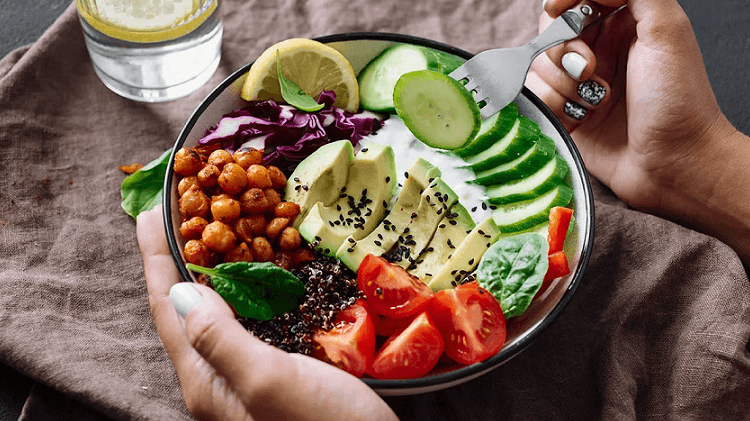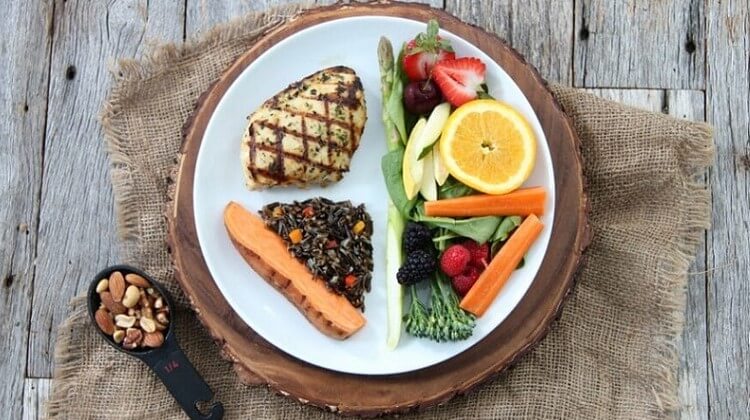In today’s society, the pursuit of a healthy weight and body composition is a common goal for many women.
However, navigating the vast amount of information available on diet and fat loss can be overwhelming.
In this comprehensive guide, we will break down the science behind fat loss, explore practical nutrition and exercise strategies, delve into the importance of mindset and behavior change, and discuss lifestyle factors that can impact weight management.
Whether you are just starting your journey or looking to refine your approach, this guide will provide you with the knowledge and tools you need to achieve lasting results.
Understanding Diet and Fat Loss for Women
At its core, fat loss is a matter of energy balance, that means consuming fewer calories than you expend.
However, the process is influenced by various factors, including genetics, hormones, and metabolism.
Women, in particular, may face unique challenges due to hormonal fluctuations and differences in fat distribution.
Understanding these factors can help tailor an effective diet and fat loss for women strategy that takes into account individual needs and preferences.
Nutrition for Fat Loss In Women
A balanced diet is essential for sustainable fat loss. Focus on nutrient-dense foods, such as; lean proteins, whole grains, fruits, vegetables, and healthy fats.
Aim for a macronutrient breakdown that supports your goals, with an emphasis on protein to support muscle growth and repair.
Don’t forget the importance of micronutrients, which play a crucial role in metabolism and overall health.
Consider meal timing and portion control to regulate hunger and optimize energy levels throughout the day. And, of course, hydration is key for proper digestion, metabolism, and appetite regulation.
Here’s a breakdown of each component of nutrition that you need to pay attention to if you want to lose body fat.

1. Focus on Nutrient-Dense Foods:
Nutrient-dense foods provide a high amount of essential nutrients relative to their calorie content.
This means you get more bang for your buck in terms of vitamins, minerals, and other beneficial compounds without excess calories.
Examples include:
Lean proteins:
These include chicken breast, turkey, fish, tofu, tempeh, beans, and lentils.
Protein is particularly important for fat loss because it helps to preserve lean muscle mass, which is crucial for maintaining a healthy metabolism.
Whole grains:
Consume whole grains like brown rice, quinoa, oats, barley, and whole wheat bread.
Whole grains provide fiber, which aids in digestion, helps you feel full longer, and stabilizes blood sugar levels.
Fruits and vegetables:
Try to fill half your plate with colorful fruits and vegetables at each meal.
They are low in calories and high in fiber, vitamins, and minerals, making them essential for overall health and weight management.
Healthy fats:
Endeavor to include natural fat sources like avocados, nuts, seeds, olive oil, and fatty fish, such as; salmon and mackerel.
Healthy fats are important for satiety, hormone production, and nutrient absorption.
2. Macronutrient Breakdown:
Your macronutrient breakdown refers to the percentage of calories you consume from carbohydrates, protein, and fat.
While the ideal breakdown can vary depending on individual factors, such as; activity level and metabolic rate, many find success with a balanced approach that includes:
Adequate protein intake:
Aim for around 0.8 to 1 gram of protein per pound of body weight per day.
This supports muscle growth and repair, enhances satiety, and helps preserve lean muscle mass during weight loss.
Moderate carbohydrate intake:
Focus on whole, unprocessed carbohydrates, such as; fruits, vegetables, and whole grains.
These provide sustained energy and essential nutrients while minimizing blood sugar spikes and crashes.
Healthy fat intake:
Aim to include a variety of healthy fats in your diet, making up around 20-35% of your total daily calories.
This supports hormone production, brain function, and overall health.
3. Micronutrients:
In addition to macronutrients, it’s important to pay attention to micronutrients—vitamins and minerals that are essential for various bodily functions.
Consuming a diverse range of nutrient-dense foods ensures you get an array of micronutrients to support metabolism, energy production, and overall health.
4. Meal Timing and Portion Control:
While meal timing and portion control are individualized to some extent, there are general principles that can help optimize fat loss:
- Aim for balanced meals and snacks every 3-4 hours to keep energy levels stable and prevent overeating.
- Consider front-loading your calories by eating larger meals earlier in the day and lighter meals in the evening, when energy expenditure tends to decrease.
- Practice mindful eating by paying attention to hunger and fullness cues, eating slowly, and savoring each bite.
- Portion control can be aided by measuring or estimating serving sizes, using smaller plates, and avoiding distractions while eating.

5. Hydration:
Adequate hydration is essential for overall health and plays a key role in fat loss as well.
Drinking water helps to support proper digestion, metabolism, and appetite regulation.
Aim to drink at least 8-10 cups of water per day, or more if you are active or in a hot climate.
By incorporating these strategies into your diet, you can create a balanced and sustainable eating plan that supports fat loss while nourishing your body with essential nutrients.
Remember to listen to your body’s cues, experiment with different approaches, and find what works best for you in the long term.
Tailoring the Diet to Women’s Needs
Women’s nutritional needs can vary based on factors, such as; age, activity level, and reproductive stage.
For example, hormonal fluctuations throughout the menstrual cycle may affect appetite, cravings, and energy levels.
Strategies, such as; adjusting calorie intake and macronutrient ratios to align with menstrual phases can help manage these fluctuations and support consistent progress.
During pregnancy and postpartum, focus on nutrient-dense foods to support maternal and fetal health while managing weight gain.
And during menopause, prioritize foods rich in calcium and vitamin D to support bone health and consider adjustments to calorie intake to accommodate changes in metabolism.
Exercise for Fat Loss
In addition to diet, regular exercise is crucial for achieving and maintaining fat loss.
Incorporate a combination of cardiovascular exercise, strength training, and flexibility/mobility work into your routine.
Cardiovascular exercise helps burn calories and improve cardiovascular health, while strength training builds lean muscle mass and boosts metabolism.
Don’t forget the importance of rest and recovery to prevent injury and maximize results. And remember, consistency is key, so find activities you enjoy and make them a regular part of your routine.
Mindset and Behavior Change
Achieving fat loss isn’t just about what you eat and how much you exercise, it’s also about mindset and behavior change. Cultivate a positive mindset by focusing on progress, not perfection, and practicing self-compassion.
Identify and challenge negative thought patterns that may be holding you back, and surround yourself with supportive friends and family who encourage your goals.
Develop strategies for managing stress and emotional eating, such as; mindfulness, deep breathing, and finding alternative ways to cope with emotions.
Adopt Lifestyle Changes for Fat Loss
In addition to diet and exercise, various lifestyle factors can impact fat loss. Prioritize quality sleep to support hormone regulation, appetite control, and energy levels.
Manage stress through relaxation techniques, hobbies, and social support networks. Create a supportive environment by surrounding yourself with like-minded individuals who share your goals and values.
And remember to be patient and kind to yourself, as fat loss is a journey that takes time and dedication, but with the right mindset and approach, it’s achievable for anyone.
Putting It All Together for Sustainable Fat Loss Results
To put these principles into action, consider following a sample meal plan and workout routine tailored to your individual needs and preferences.
Remember to listen to your body, adjust as needed, and stay consistent with your efforts. And above all, focus on building healthy habits that will serve you well for a lifetime and not just for a few weeks or months.

Conclusion
Finally, achieving fat loss is a multifaceted endeavor that requires a holistic approach. By understanding the science behind fat loss, adopting a balanced and nutrient-dense diet, incorporating regular exercise into your routine, cultivating a positive mindset, and addressing lifestyle factors that impact weight management, you can achieve lasting results.
Remember, progress may not always be linear, but with patience, persistence, and dedication, you can reach your goals and live a healthier, happier life.
If you want more assistance, you can chat with an IFBB PRO for free at Anabolic Coach and be on your way to developing a fat loss plan that is personalized to your peculiar circumstance and designed to meet your cutting goals today.


